Tree diseases cause unsightly blemishes to appear on your trees as well as cause death in many that are affected. Here is a list of the top 10 tree diseases in North America. Keep an eye out and make sure to give us a call if you notice any of these diseases on your trees.
- American Chestnut Blight
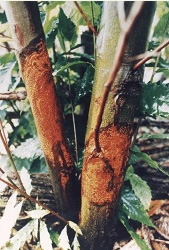
The chestnut disease was brought into America in 1904 by an exported tree sent to New York City. This fungus is widespread and there is no indication that a cure will be found. The American chestnut used to be a major source of lumber but the fungus has wiped out this tree as a commercial species.
- Amillaria Root Rot
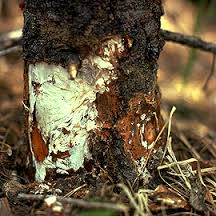
Armillaria root disease is found throughout temperate and tropical regions of the world. In the continental United States, the disease has been reported in nearly every State. Hosts include hundreds of species of trees, shrubs, vines, and forbs growing in forests, along roadsides, and in cultivated areas. The fungi cause mortality, wood decay and growth reduction in healthy and non healthy hosts.
- Anthracnose and Leaf Spot Diseases
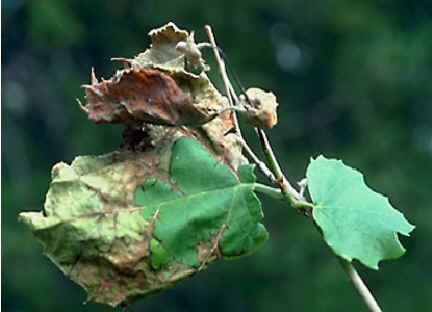
Anthracnose disease causes irregular dead areas on leaf margins, between and across and/or along veins, often moving onto the shoots and small twigs; sometimes whole leaves are engulfed. The leaf spot disease causes dead spots on areas of healthy tissue. Consecutive years of defoliation can decrease the tree’s vigor, weakening the tree and thereby predisposing the plant to opportunistic pests that may further harm or damage the tree.
- Annosus Root Rot
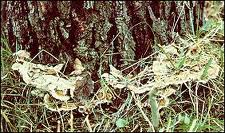
Annosum root rot is an important conifer disease. The disease can cause root rot, butt rot, reduced growth, and mortality in host trees. The disease is most commonly associated with thinned pine stands located on sandy, well-drained soils. A tree can become infected and show no about ground symptoms until half of the root system or collar is affected. Declining trees show sparse, chlorotic crowns with short needles.
- Aspen Canker
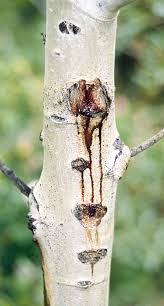
Aspen canker is one of the more common tree diseases of our area. It is a disease of the bark in which a fungus remains active over time in a lesion and then causes progressive expansion of the lesion. Canker impacts deformation of stem growth, and mortality, leading to loss of wood value.
- Bacterial Wet wood
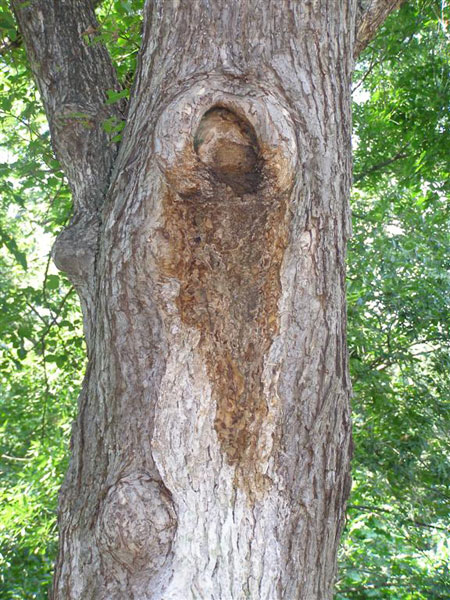
Bacterial wet wood is a common disease that affects the central core or bark of forest trees. Slime is produced from the fermentation pressure and is toxic to growing areas of the tree and is also the food of choice for several insects. Symptoms include a yellow brown discoloration generally confined to the central core of the tree. Unfortunately effective control measures do not exist and prevention of tree stress is the best approach.
- Beech Bark Disease
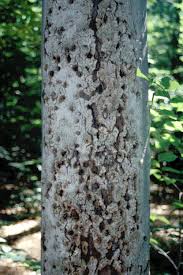
Beech bark disease is caused when a beech scale insect creates a wound in the bark. Next, two different fungi invade the wound and cause a canker to form. Then new cankers will start to form and begin to kill the tree. The first outbreak in North America was documented in 1920 in Massachusetts but now the disease has spread as far west as Michigan and as far south as North Carolina.
- Brown Spot in Longleaf Pine
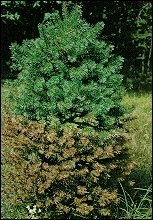
Brown spot has become a serious problem in Christmas tree farms across the North Mid United States. It causes delays in growth and mortality in the longleaf pine. The disease reduces total annual growth of southern pines by more than 16 million cubic feet. The symptoms include two kinds of needle spots, one yellow and one a brownish amber-yellow.
- Canker Rot
Cankers are localized damage to the stem or branches. Cankers are found centered on a wound and are the entrance location for fungi. These fungi get inside and cause expansion and/or girdling of the tree. The disease is difficult to manage on a tree stem, but can be pruned out if on the branches.
- Commandra Blister Rust
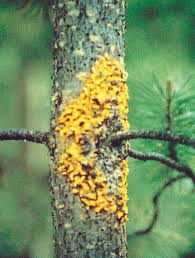
Comandra blister rust is a disease of hard pines that is caused by a fungus growing in the inner bark and is located throughout all of North America besides the south and southeast. The disease infects hard pines but needs an alternate host to spread from one tree to another. It is known to cause growth reduction, stem deformity and mortality in effected trees.
Here at TLC we are ready to tackle all your tree care needs. We have management services tailored exactly to your looking for. Give us a call and our certified arborists will head on over to figure out a tree care plan that works for you.
Written by Robert Mrdutt


